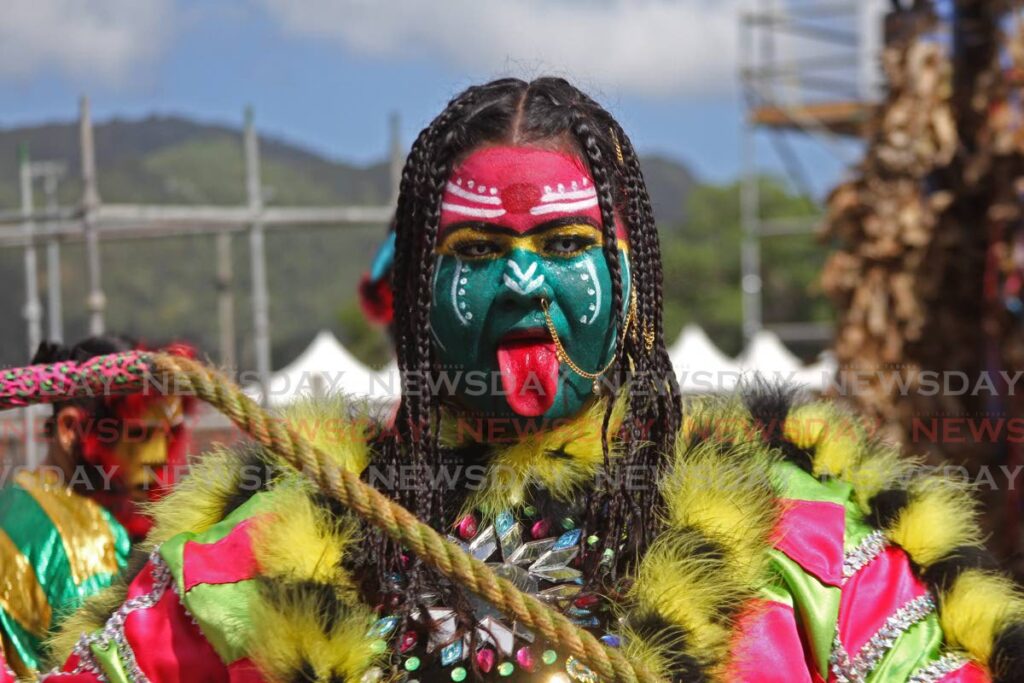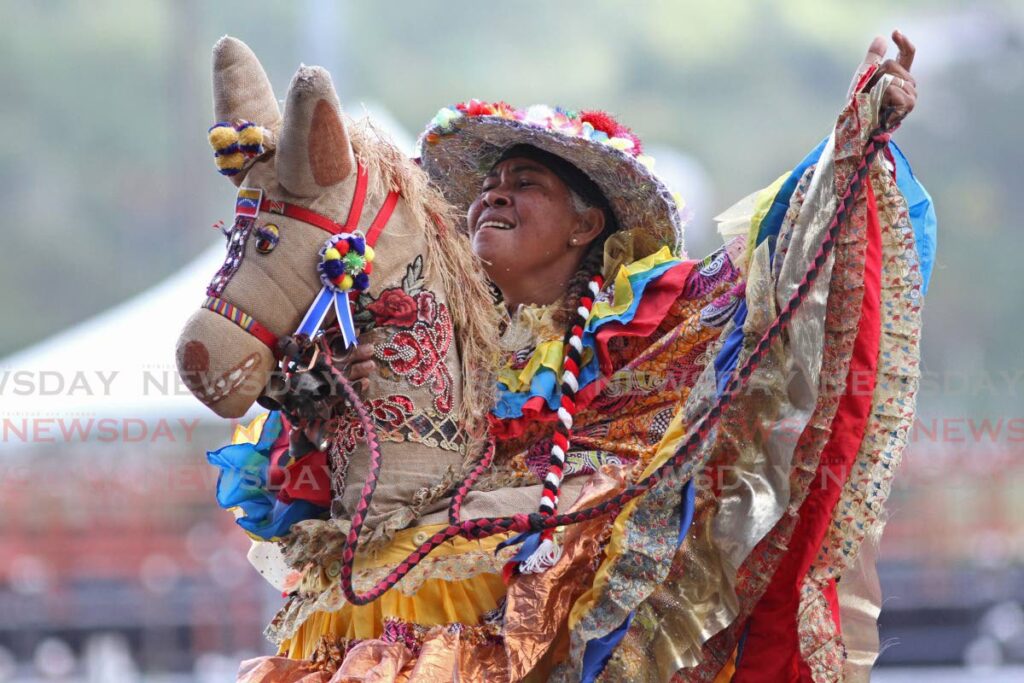Masqueraders keep old-time mas alive in traditional and conventional competition

IT WAS A celebration of tradition and culture at the Queen’s Park Savannah on Sunday, as the TT Carnival Bands Association (TTCBA) and the National Carnival Commission (NCC) hosted the Traditional and Conventional Mas Competition.
The crowd of spectators was small, with less than 100 patrons looking on at the revellers as they crossed the stage. The revellers were separated into several categories including gorilla, jab molassie, fancy sailor, robber, bat and minstrel. At the mid-point of the competition there was a performance by soca star Swappi who performed some of his hits such as Feeling it and Jumbie Head.
Despite the small crowds, revellers were grateful to cross the stage and keep the spirit of Carnival alive.
“It is great. Culture is culture,” said Carlisle Jones, who has been portraying the fancy sailor for 25 years. “It was the fancy sailors that you see in paintings on the Grand Stand that trained me in this art form. They are very serious about the craft.”

“It was an exciting experience,” said Jerrell Jones, who portrayed the traditional Bookman, designed by Shequilla Daniel. “I was kind of nervous before I came on stage but the music hyped me up a bit.”
Some masqueraders were happy to keep traditions alive, not only for the history of Carnival but as a family tradition as well.
Margaret Remy who played a minstrel and performed When You're Smiling dressed as a white-faced minstrel, said her performance was dedicated to her brother Vester Campbell, who died two years ago. She said the competition gave her an opportunity to perform for the public and keep the tradition of the minstrel alive.
“A lot of people would ask me if I am a sailor because they don’t know much about minstrels. But minstrels came about just after slavery,” she said.
She told Newsday the minstrels in those times were white performers in blackface. She and her group of minstrels, the Rovers, would paint their faces white and performed oldies originally sung in the 1940s.
Jason Mohammed, who portrayed the fancy Indian under the title Soca Warrior, told Newsday he inherited his costume from his father Vernon Mohammed and had been using the costume for the past ten years.
“This is my brand. Every Carnival, if you are looking for me you would find me in this costume. I performed to show other fancy Indian performers that if they vaccinate they can come out and celebrate.”
Travis Mc Neilly said his mother Althea Mc Neilly designed his midnight robber costume a week ago.
“It was a short time that we had to design and create the costume, so we just brought everything together as best as we could. I love the fact that even in covid19 I could come out as a midnight robber and portray my craft.”
Although the costumes were considered traditional, many of the masqueraders maintained the tradition of mixing current events into portrayals.
Zico Ragoo, who portrayed a gorilla with his costume Back to Africa Lowland Gorilla, did so, as his gorilla costume was hospital scrubs and included a syringe and vaccination card.
“This was to portray the fact that without the vaccine we cannot reopen,” he said. “I wanted to encourage people to take the vaccine and let’s get things going again.”
Lennox Mc Ewen's clown portrayal Covid Clown in Town also highlighted the necessity for vaccination and mask wearing.
“I decided to mix the message of vaccination and mask wearing in with the clown costume to show people that they need to be protected. I like the clown costumes because I love acting and there is a lot of acting involved with being a clown.”

The NCC launched A Taste of Carnival in January with nine events from February 4-March 1, which will include calypso tents, pan events, the Dimache Gras and senior kings and queens competitions. The NCC announced that the cost of the events would be around $30 million.

Comments
"Masqueraders keep old-time mas alive in traditional and conventional competition"